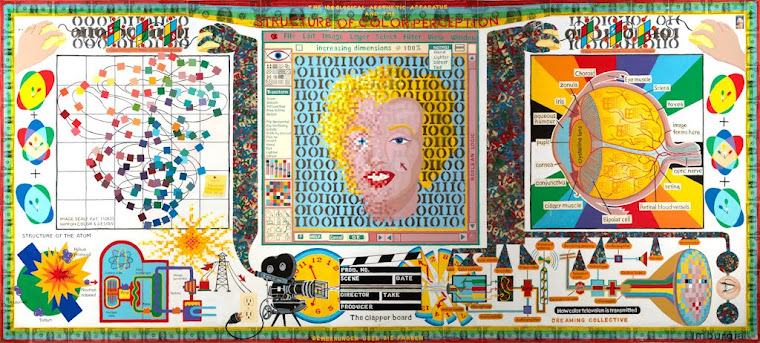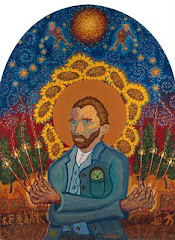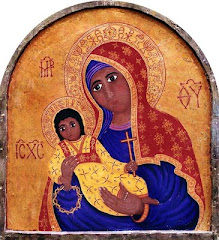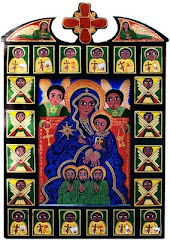
This blogging business can get very snarky can’t it! This is a comment I made over at “The Politics of the Cross Resurrected”
And I quote myself, "Hey Y’all good to pop in here at TPotCR again (but gosh darn it DanO just what did you write that got your expunged? You must have really stretched brother Craig’s forbearance to the breaking point!) Anyway, hard to believe y’all are still here engaging in this same kind of discourse, shouldn’t everyone be out occupying something? Me, I been researching Tennessee’s Williams play and movie “Suddenly Last Summer,” and I highly recommend them both (T.W. is Germany’s favorite play write you know, and those Germans are usually right about such things. Really, one could write all of Freud, Lacan, Foucault and half the Bible out of this one movie!). TW’s work, (like Beckett’s?) could be engaged as a lifelong argument with God, sort of like what the Bible itself is, only vice versa. I don’t see much evidence that God has changed many folks minds these last 6000 years though, and that makes me wonder just what God is getting out of this whole exercise (one wonders if God shouldn’t have consummated with the Cro-Magnon's instead?). “Even if one should come back from the dead they would not believe,” the gospels tell us, how much less so from a bunch of cleverly disingenuous syllogisms. “Suddenly” dramatizes this point and how we refuse to acknowledge truth, and the extremes we will go to to destroy the truths we just can’t bear to face. It is untrue, however, as these things are reckoned, that TW wrote “Suddenly” after psychiatry was unable to “cure” his homosexuality in 1957 (rumor has it he went down on ‘The Doors’ Jim Morrison at Warhol’s factory, but I digress). I would be careful about over-identifying TW with his main character ‘cousin Sebastian’ who used Kathryn Hepburn (Mrs. Venable) and then Elizabeth Taylor (Catharine Holly) to procure fresh young boys for him. That, of course, is the truth that Mrs. Venable wants Montgomery Clift (Dr. Cukrowicz) to cut out of Lizzy’s brain! Oh how often we would all like to wield our own truth expunging scalpels on one another! But apparently that’s not how Jesus rolls (or is it ?).
Mrs. Venable, Scene One:
“...but on the Encantadas we saw something Melville hadn't written about...the sand all alive as the hatched sea-turtles made their dash for the sea, while the birds hovered and swooped to attack! They were diving down on the hatched sea-turtles, turning them over to expose their soft undersides, tearing the undersides open and rending and eating their flesh....Well, now I've said it, my son was looking for God. I mean for a clear image of Him. He spent that whole blazing equatorial day in the crow's nest of the schooner watching that thing on the beach of the Encantadas till it was too dark to see it, and when he came back down the rigging, he said, Well, now I've seen Him!—and he meant God...”
I think that for a good part of my life I have felt like one of those baby turtles in a death-defying scramble for the life-saving sea while being tormented by ruthless predator-drone-angels sent by a merciless God. Truth is, I’v really been feasting on turtle tacos seasoned with pity and self-righteousness. Well, to make a long story short, cousin Sebastian perishes in an omophagic orgy; thay is, he devoured by the street children and beggars, who literally 'feed on his flesh.' Of course there is a strong reference to Christ and his "flesh being real food" and that unless we "eat his flesh and drink his blood we have no part of him," ahhh... you gotta love those writers of the "Christ soaked south." Then again, he was buggering these vulnerable youths, and taking advantage of their poverty, but to be fair he also molested rich French and Italian boys. Well, as you can imagine, in 1959 the censors of Catholic league of Decency took their own scalpels to TW (there’s nothing Catholic potentates hate more than molesting children) and they lobotomized Gore Vidal’s screenplay, but it’s still a damn good movie. Of course, things have changed for the better, nowadays one can go on one of those ‘eco tours’ and actually pay to rescue baby turtles from the seahawks and gulls! It’s really a flourishing business (see link below). We don’t know what the hungry gulls and hawks think about this (or God for that matter) but I like to think that Jesus would be pleased to have Christians pitch in and rescue some turtle tykes and maybe give his image a positive boost after the beating he’s been taking by the Gay/God-less, liberal, Hollywood media. Like this example from TW at the end of the movie: “Of course God is cruel, we didn’t need to come to the encantadas and look at the turtles to find that out. No, we’ve always known about him, the savage face he shows to people and the fierce things he shouts, It’s all we ever really see or hear of him now, nobody seems to know why, the difference is we know about him and the others don’t, that’s where were lucky....” Really, haven’t we all felt that way? “we know about him and the others don’t.” Well, great to visit again and below is a link to one of those eco tours, blessings and obliged, and see you on the beach!, Daniel."
Acapulco Tour Guides @ http://www.acapulcotourguides.com/2011/06/endangered-baby-turtle-release-ceremony/
Oh, and just to be fair and balanced here is a link to great recipe for “Charles Brongers Louisville turtle soup’: http://www.yummly.com/recipe/Charles-Brongers-Louisville-Turtle-Soup-MyRecipes_1













